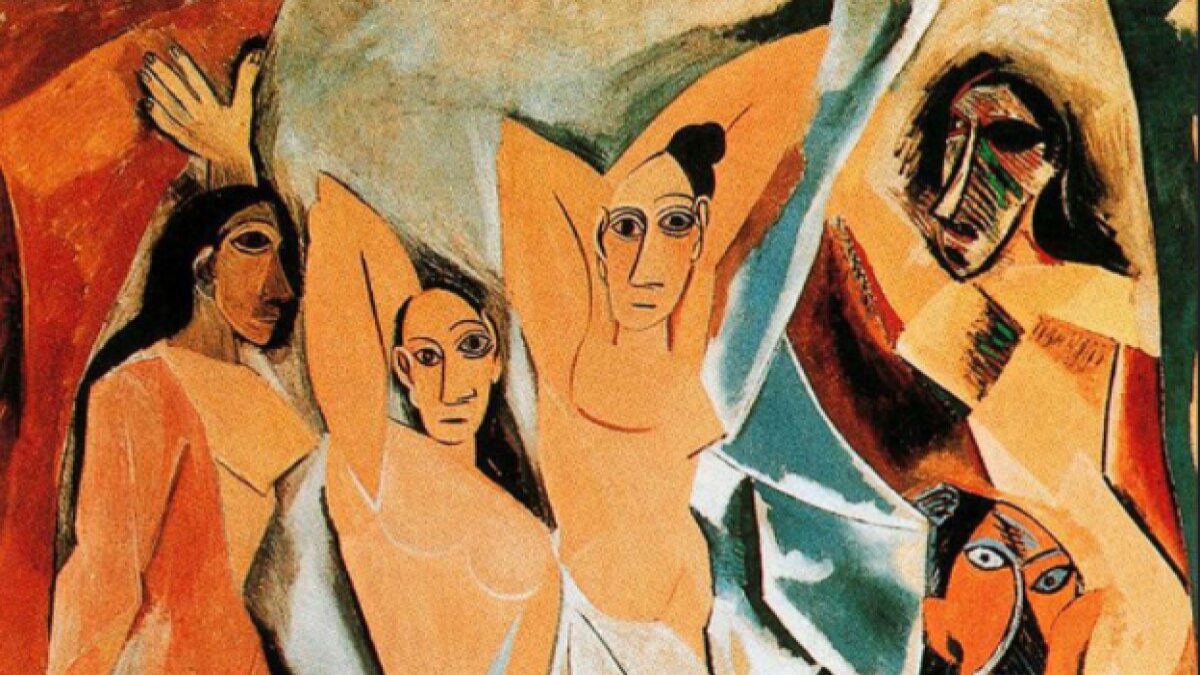The Phillips Collection’s new show, “Picasso: Painting the Blue Period,” is exactly what an art exhibition in the 21st century ought to be. It’s a large, but not overwhelming, assemblage of paintings, sculptures, drawings, and other art objects, augmented by period photographs, technical imaging, and short films dealing with issues such as execution and conservation.
The exhibition documents a brief but critical period in the life and work of the most important artist of the 20th century, in a way that feels unusually accessible and intimate. This is possibly the best exhibition I’ve ever seen at The Phillips, and I understand they have been working on it for a decade. That care and attention to detail certainly shows, and makes this exhibition a must-see if you find yourself in our nation’s capital this spring.
Whatever you may think of his work, today the name of Pablo Picasso (1881-1973) can be used almost as a generic reference to someone being, or aspiring to be, an important artist. That wasn’t always the case, however. Before the visceral shock of “Les Demoiselles de Avignon” (1907)—Picasso’s first major riposte to the ascendancy of Henri Matisse (1869-1954)—or the iconic “Guernica” (1937)—arguably the most famous (and overrated) painting in the history of Modern art—there were no guarantees that this short, stocky Spaniard with the intense stare and self-confidence beyond his station would ever amount to much.
Born in Málaga, Spain into a middle-class environment he later both despised and took full advantage of when it suited his needs, after hopping from Andalusia to Galicia in his teens Picasso landed in Catalonia, where his father was an instructor at Barcelona’s most prestigious art school. Eschewing the classically oriented artistic career his family wanted him to pursue, and realizing the center of everything new in Europe was turn-of-the-century Paris, Picasso made his first trip to the City of Lights in September 1900. From that point on, he was determined to make a name for himself there, in that buzzing hive of artistic innovation, whatever the personal cost.
Irreverent, Alright
Although the Phillips’ show focuses on Picasso’s Blue Period, it doesn’t just simply toss a bunch of sentimental, murky blue pictures on the wall with no context. The exhibition opens with youthful works executed in Barcelona, Madrid, and Paris, many of which owe visual debts to older artists such as Auguste Rodin (1840-1917) and Henri de Toulouse-Lautrec (1864-1901).
In “The Diners” (1901) for example, with its flashily attired young woman seated in a café alongside her older, balding sugar daddy, Picasso demonstrates the kind of biting humor that made him an irreverent yet accurate observer of his surroundings. As she leans in to suggest they order another bottle of Dom Perignon, he seems a bit stunned as he anticipates what this evening out is going to end up costing him.
Depending upon whom you ask, the “Blue Period” began in the second half of 1901 and lasted until 1904. Picasso’s output was generally characterized by a somber palette dominated by shades of blue, a color range at odds with the bright hues then popular in French art, but more in keeping with the darker themes that, if the reader will forgive the pun, gave him the blues.
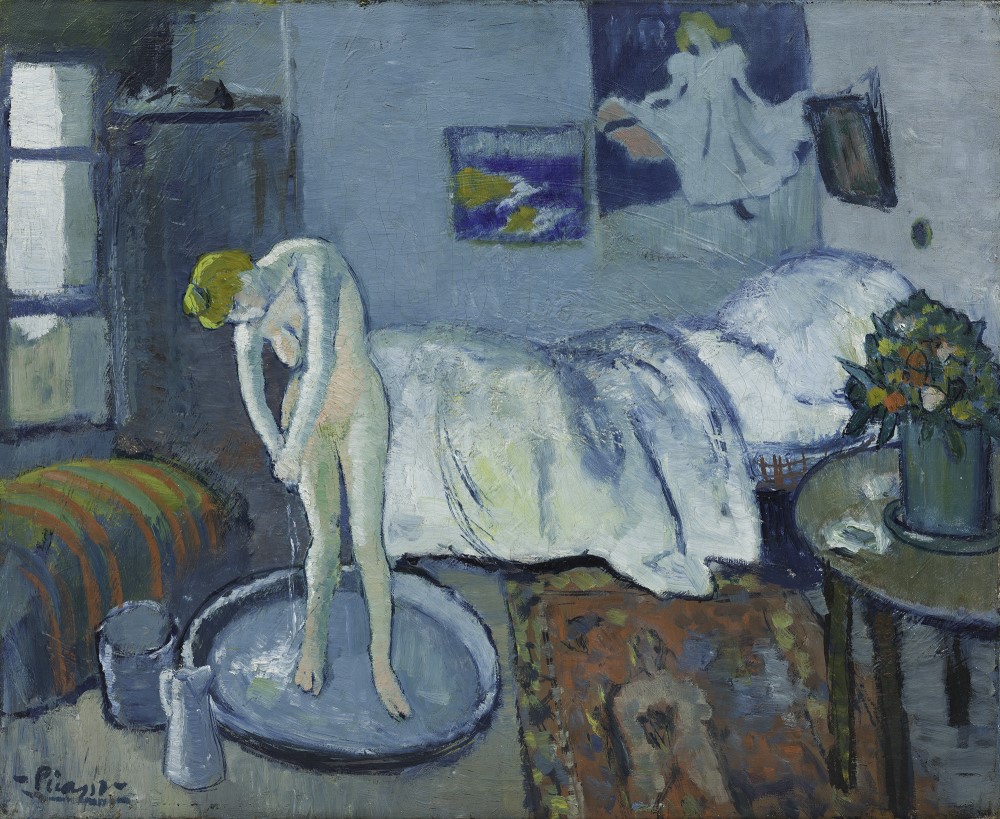
© 2022 Estate of Pablo Picasso / Artists Rights Society (ARS), New York.
Poverty, suffering, death, and other ravagers of mankind all dominate the art created during these years. For many, the work produced during this brief portion of his long career represents their favorite incarnation of Picasso, or at least the most relatable.
The Sources of Picasso’s Blues
Where did this rather maudlin art come from? For one thing, no one quite understands and appreciates the deeply symbiotic relationship between joy and pain, happiness and sorrow, high and low all existing simultaneously like a Spaniard does. It flavors everything from music and dance to literature, politics, and religious practice.
Certainly personal experience had a part to play, as well. From the death of his younger sister to the suicide of one of his closest friends, from the experience of literal hunger to substance abuse and venereal disease, Picasso lived through a significant amount of suffering, often brought on by poor choices, before he turned 25.
Yet as Miles J. Unger points out in his brilliant biography, “Picasso and the Painting That Shocked the World” (Simon and Schuster, 2018), understanding Picasso’s art isn’t as simple as chalking it up to native fatalism or personal tragedy. “For Picasso art was, at its deepest level, a shamanistic practice,” he argues, “concerned with managing the hidden forces that rule our fates. It was impossible to exorcise the ghosts of a dead sister or a despairing friend with soaring harmonies evoking sundrenched Shangri-las. Not for him an art of relaxation or sensual bliss.”
Picasso claimed not to know God, or at least, not the Judeo-Christian one he had been brought up to believe in and rejected. He was, however, very well-acquainted with the Devil and his minions. Thus, in paintings such as “Melancholy Woman” (1901-2), “Woman with Bangs” (1902), or “Woman in a Blue Shawl” (1902), all is calm and cool, but nothing is peaceful or pleasant. Backs are hunched, features are asymmetrical, expressions range from exhaustion to a hint of malevolence.
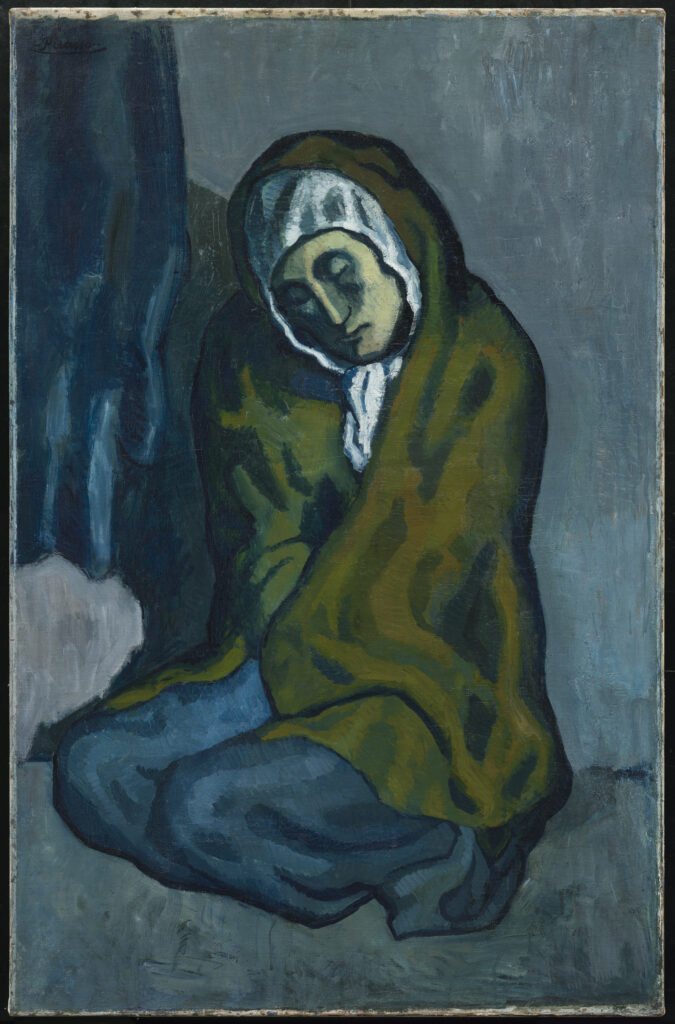
Life takes a hard toll on the people in Picasso’s images. In “Mother and Child by the Sea” (1901-02) for example, the elongated figure of the veiled woman carrying her baby and holding an incongruously bright red rose intentionally brings to mind the image of the Madonna and Child. Yet the message is not one of salvation but of something more ambiguous and possibly deadly.
The woman is gaunt, while the child appears almost shrouded and immobile as it nestles against its mother’s breast. Perhaps the mother is about to row her child and herself out to sea, in order to drown rather than die from the relentless attack of starvation.
Models Among the Destitute and Desperate
The pathos of such figures becomes even more apparent when one learns that a number of these images depict women who were not friends or professional models, but the incarcerated poor. As the exhibition catalog points out, in the fall of 1901 Picasso somehow managed to obtain permission to pay regular visits to the women’s prison of Saint-Lazare in Paris whenever he liked.
Women convicted of prostitution, theft, and other crimes were held there; most of them were desperately poor, and many suffered from venereal and other diseases. Their haunted faces and broken forms gave the artist access to the kinds of suffering he wanted to portray on canvas, but in true Picasso misogynistic fashion, he never paid for their time. He found it better to spend his meager resources at opium dens or bordellos, where many of his models had previously been employed.
One particularly mesmerizing painting in the show, less threatening than the others but equally melancholic, comes from the Hiroshima Museum of Art. “Two Women at a Bar” (1902), is a superb example of how Picasso understood and learned from his studies of sculpture, in addition to being a sculptor himself.
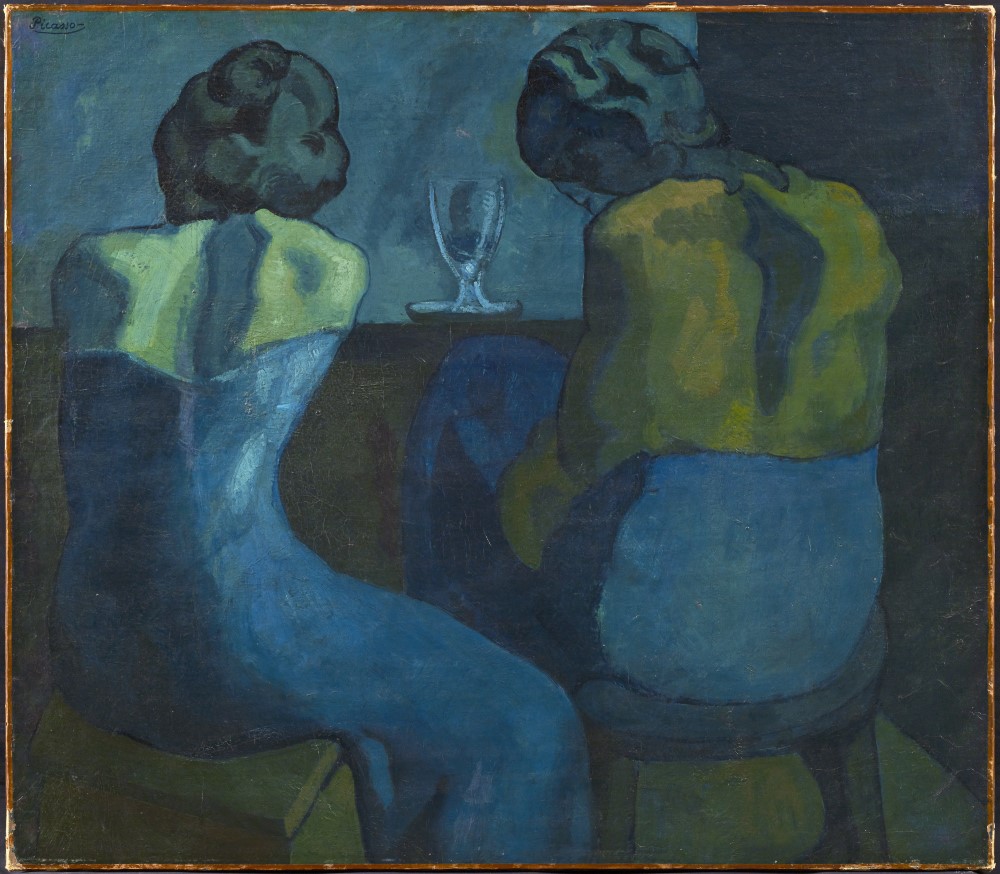
© 2022 Estate of Pablo Picasso / Artists Rights Society (ARS), New York.
In this picture, the figures are shown from behind, slouching on their barstools after a night of heavy drinking. Through the use of light and shade effects, Picasso focuses our attention on the musculature of their backs, in a way that anticipates similar imagery created by Surrealist painters, photographers, and filmmakers of the next generation. The mood is depressing and somber, but the composition and coloring are somehow engrossing.
The Transformation in His Work
This work, like many others in the show, may appear to evoke Paris but was executed in Barcelona. Picasso did not just simply step off a train in Paris at 19 and immediately fall in with the French, much as he might have liked to do so.
Most of his inner circle in Paris during the blue Period were Catalans and Spaniards, and as with many of them, his attempts to make it in the burgeoning Parisian art scene failed repeatedly. He had to return home to his family and art cronies in Barcelona multiple times for material and psychological support. Indeed, during one of these setbacks, Picasso’s father rented studio space for him off the Ramblas near Barcelona’s waterfront, and Picasso’s beautiful moonlit painting “Barcelona Rooftops” (1902) of the view from atop his studio appears in the Phillips show.
As the exhibition moves through further studies of suffering to its conclusion, it becomes clear what an astonishing transformation took place in Picasso’s art over a very short period of time. By the final gallery, we see the magnificent “Lady with a Fan” (1905), from Picasso’s “Rose Period” of 1904-1906 when he finally left his blue funk behind.
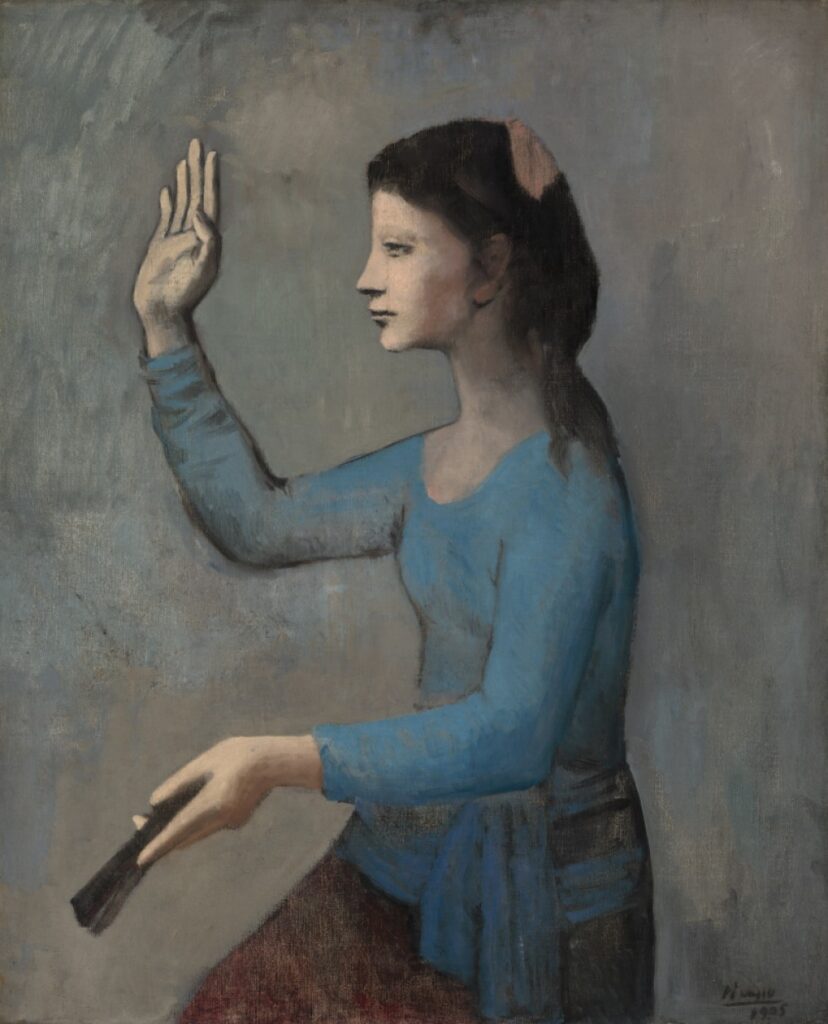
It was painted only four years after “The Diners,” yet looks to be by a completely different artist. The overall feeling is one of a timeless, serene monumentality, rather than a take on contemporary societal ills.
By this point, Picasso is looking to the ancient world, non-Western cultures, and Romanesque art for inspiration. That investigation will lead to works outside the scope of this exhibition, such as his seminal “Portrait of Gertrude Stein” (1905-6), and still later to Cubism.
What’s Wrong With This Show
For all its brilliance, the show does have its imperfections. So as not to turn this review into a puff piece, I need to point a couple of them out to the reader. Although paintings critical to understanding and appreciating the Blue Period are here, such as “Evocation (The Burial of Casagemas)” (1901) from the Musée d’Art Moderne in Paris and “The Soup” (1902-3) from the Art Gallery of Ontario, others are absent.
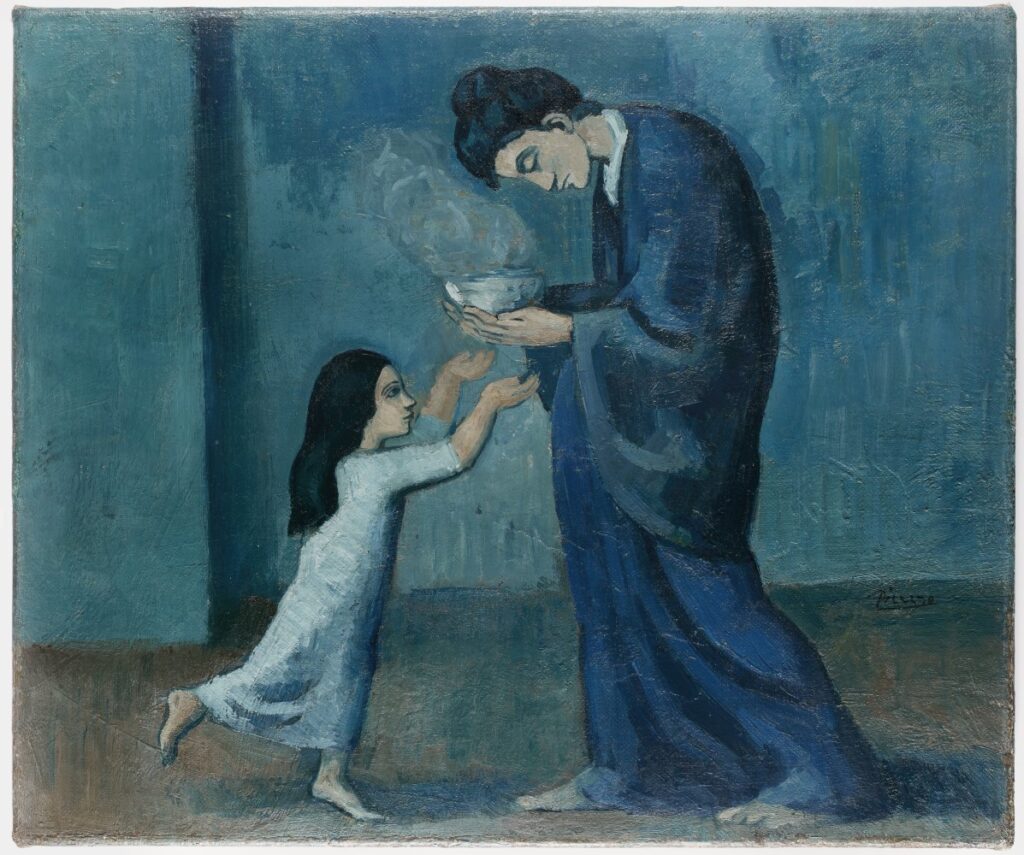
© 2022 Estate of Pablo Picasso / Artists Rights Society (ARS), New York.
The Art Institute of Chicago’s famous “The Old Guitarist” (1903-4), for example, fuses Picasso’s examinations of the work of El Greco (1541-1614), Isidre Nonell (1872-1911), and even Picasso’s lifelong struggle against his father together. It would have been instructive to see it in the show, alongside the work of the artists who influenced the young Picasso. While the Phillips owns an El Greco and works it into the exhibition quite well, Isidre Nonell is represented only by a pair of printed illustrations.
Part of the issue, I suppose, is the lack of significant exhibitions in this country dedicated to the work of major Modernista artists such as Nonell, Ramon Casas (1866-1932), and Santiago Rusiñol (1861-1931), all of whom were older friends and supporters of the young Picasso. American audiences interested in better understanding Picasso would benefit greatly from exhibitions of their work taking place on these shores. Still, we all know that art is not created in a vacuum, and to its credit the Phillips exhibition makes very clear that the young Picasso’s growth and change during the first decade of the 20th century did not take place independently of what was going on around him.
While the Blue Period remains challenging even today, with its murky colors and equally murky symbolism, when presented as well as it is here, this century-old art challenges today’s audiences just as much as it did audiences in Picasso’s own time. Many of Picasso’s contemporaries, including art dealers, critics, and close friends, struggled to understand and appreciate this brooding collection of dark themes and subjects.
While the passage of time often resolves such artistic mysteries, since the more we look at things the more we can pick up on elements that previously escaped our notice, there is still much that we need to learn and understand about these expressions of inner artistic and personal turmoil. This presentation of the young Picasso’s struggle to find his footing as an artist is most definitely worth a first, second, and third look.
“Picasso: Painting the Blue Period” is at the Phillips Collection in Washington DC through June 12.
